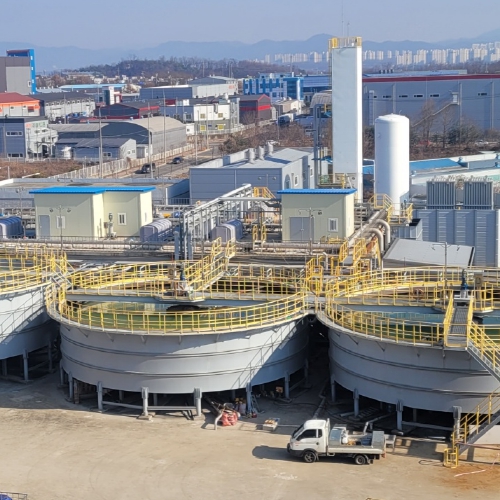Presenting a future-oriented vision through continuous research and efforts in the environmental industry
❚ Water Quality Environmental Construction Business
■ Overview
The biological treatment method is a method of removing organic matter that can be decomposed by microorganisms among the organic substances present in wastewater using microorganisms. It is a method widely adopted for secondary treatment of urban sewage and treatment of factory wastewater containing high concentrations of organic substances. There are various methods such as sludge method, trickling filter method, oxidation zone method, rotating disk method, aerobic and anaerobic digestion method, putrefaction method, IMHOFF tank, and anaerobic oxidation zone, so they can be applied according to the site.
The biological treatment method is a method of removing organic matter that can be decomposed by living things among the organic matter present in sewage and wastewater by using (cultivating) microorganisms. The microorganisms used include protozoa, algae, and bacteria.
■ Advantages
Biological treatment facilities are effective in protecting the environment by treating pollutants in a natural way.
It can create various added values such as resource recovery and energy production.
Large-scale wastewater treatment.
Relatively stable processing efficiency can be expected.
■ Disadvantages
Vulnerable to fluctuations in flow rate and water quality.
Operations management skills are required.
There may be environmental inconveniences such as excess sludge, odor, and noise generated during the treatment process.
A lot of required site area is needed
■ Application Field
Secondary treatment in physical and chemical treatment facilities.
Various organic wastewater, food and agricultural and marine product processing wastewater, beverage factory wastewater, textile factory wastewater, leather factory wastewater.

